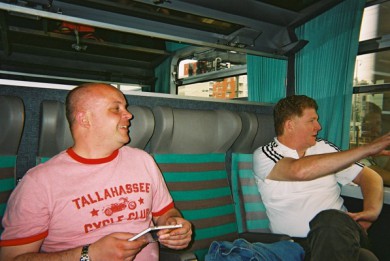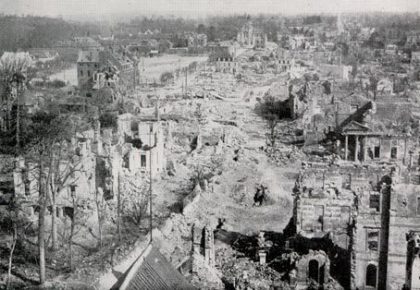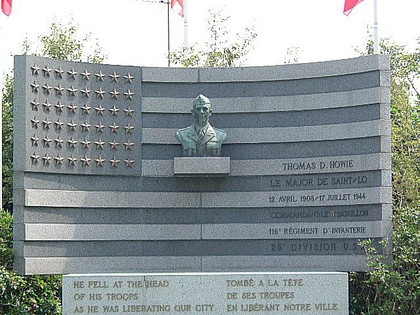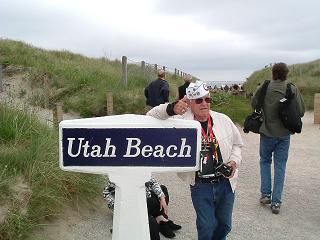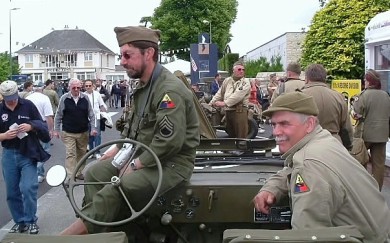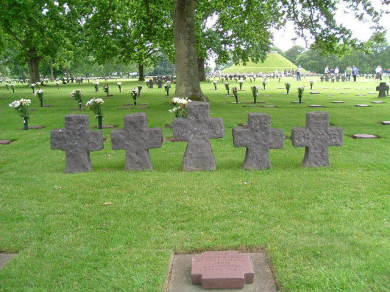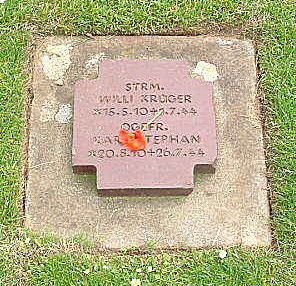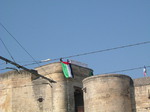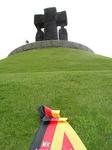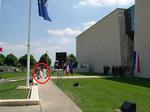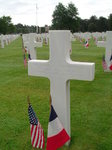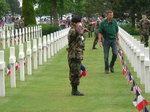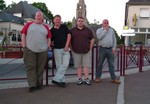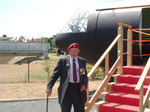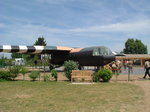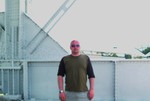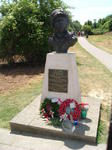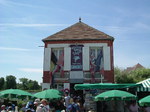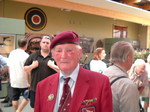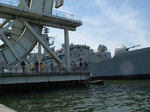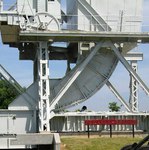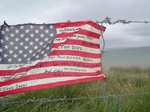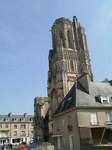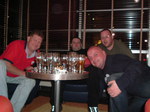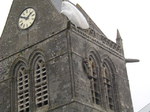
Normandy 2004
This was a special trip for the NMBS. We were re-visiting the D-Day beaches in 60 years after they had seen so much carnage, heroism and bloodshed in the liberation of Europe.
Also there was a new line up for the NMBS, Lance was busy taking his law degree - so step in Stuart and Kevin. Kevin and Stuart had heard about the NMBS exploits during working with Gerry,
Lance and I wanted in! Maybe in hindsight after the nightmare in France the pair would have thought different.
The trip was memorable for all the right reasons and all the wrong reasons. To start we had to travel to Paris by Easyjet - good flights, good airline - no complaints. It’s when we get to Paris the
trouble started. We stayed the First night at a Formule 1 at CDG airport and the trip was going well. The staff at Formule 1 was very helpful and decent, as always (This year we did not opt for
the Gite) but the joy of a good first night (free beer) was short lived.
The reason was one of the biggest car rental suppliers in the world, many cars, and dreadful customer service. Avis car rentals were sadly dreadful and nearly ruined an important, special and
memorable trip. The next day, the plan was to hire a car and to travel to Saint-Lô, a trip of over 150 miles. Avis car rentals, god bless them were the most unhelpful bunch of pen pushers the
NMBS has faced and seeing we are all Civil Servants, we know about pen pushing. Indeed the D-Day landing at Normandy were possibly easier.
The problem was that one person had a driving licence, the other had a credit card (for the deposit) Avis wanted the same person’s details. They would not budge and we could not understand why as
both the car holder and the driver were there – if we damaged the car they could still claim on the credit card. They said that no one would hire us a car what so ever - so like Steve Martin and John
Candy, we went from a Plane to a train.
The train from Paris to Saint-Lô via Caen was wonderful and the stresses that Avis and the unhelpful staff caused slipped away as we travelled through the beautiful French countryside, only
disturbed when we bought a few beers, chilled from the porter who came around with an archaic trolley that was like something you see in old French films.
It just added to that “Je ne sais quoi”
and when we reached Saint-Lô, would you believe after what Avis had said, we hired a car, no worries, no trouble, NO hassle - from a company called ADA Location - they were polite, helpful and wanted
to deal with the customer. In fact as gratitude I would certainly recommend ADA for their helpfulness.
The other problem was the weather. It reached 45 °C one day, and stayed over 30 °C for the rest of the trip. It was the heat wave that killed many elderly in France.
The German army occupied Saint-Lô, on 17 June 1940. Being a strategic crossroads, Saint-Lô was almost totally destroyed (95% according to common estimates) during the Battle of Normandy in World War II, earning the title of "The Capital of the Ruins" from Samuel Beckett.
It was even questioned whether to rebuild it or to leave the ruins intact as a testimony to the bombing.
One American soldier laconically commented: "We sure liberated the hell out of this, Ironically when we got off the train at Saint-Lô, there was a veteran getting off the train with us and he
quoted similar when he said “Last time we were here we bombed the Sh*t out of it”.
As you can see from the picture of Saint-Lô above after the bombing it looks similar to Hiroshima and Ypres, two other cities touched by the horror of warfare.
A memorial in the city honors Major Thomas Howie, Commander of the 3d Battalion, 116th Infantry Regiment of the U.S. Army’s 29th Division; the unit that liberated the city on July 18, 1944. Howie was
killed just before his unit entered the city and was so highly respected that his men placed his flag draped body on the hood of a jeep at the front of the column so he could be the first American to
enter the city. He became famous as the "Major of Saint-Lô".
We walked to the memorial and it is an impressive one with a simple thank you saying “He fell at the head of his troops as he was liberating our city”.
Disaster struck when I forgot to book a Formule 1 for one night. And whoa! I have never been never been allowed to forget it but I suppose certain things on the 2013 Marne trip made matched it. So
there we were sat in a bar in Saint-Lô thinking where we are going to sleep. Everywhere had been booked solid with the 60th Anniversary of D-Day, so the options were find a nice field to sleep
in or the hope we could find a hotel. After a ponder of our options and crossing off a field we decided to ask the bar-keep.
The bar owner was very helpful and he ran a pub called Passarelle, close to the Passarelle Henri-Lierac Bridge (It’s now called QC’s) and he found us a hotel in nearby Canisy. The Hotel when we got
there was nice, and the meal served was just what we needed after a long, hot and stressful day. The Hotel was the Au Pichet D’etain in Canisy and it’s off the beaten track, but if you needed a
place to stay in the Saint-Lô area, its cheap and on recollection the ‘fixe prix’ menu is really good. We booked 2 rooms but with sharing snoring Brachiosaurus (snoring is a major issue on these
trips) I decided to sleep in a vacant room. Kevin wished he thought the same as he had to sleep on the floor in the room he shared with Stuart.
The highlights of the trip had to be the veterans, (like the chap at Utah beach above) from both the UK and the USA. Two of the best quotes were from American Veterans.
The one about the bombing of
Saint-Lô
(as mentioned above) and from another American veteran, from a unknown southern state, who was being mithered by a reporter. We were sat in the bar of the Hotel where we were staying (we had
booked a hotel this night!) having some nibbles and a few well earned beers, across the bar we could hear the conversation between the veteran and the reporter.
For some reason the reporter thought it would be good to patronise the veteran and was making out the old war hero was stupid because of his accent and being from one of the Southern
states. The veteran was ignoring this and turned with a twinkle in his eye and said to the reporter "I may not be a redneck, but I sure love the taste of squirrel!"
The audience who had gathered to listen to the vet roared with laughter and the pip-squeak reporter looked sheepish, knowing that the old man was on to him and that everyone in the bar saw how stupid the young pretender looked.
We were so lucky to have gone during the 60th anniversary of D-Day, for many of the veterans it would be their last, although it was a joy to see earlier this month many veterans at the
70th anniversary, many in their late 80s and early 90s. The pride and dignity that these men have with always last in my memories and just shaking their hand will never seem
enough.
One of the places that we really wanted to go and see was
Sainte-Mère-Église.
Sainte-Mère-Église was an astonishing experience as the whole town was full of celebration, gratitude and a carnival spirit. The party atmosphere was wonderful and all types of people, American,
French, Dutch, British, German. There were huge BBQs with hog roasts more G.I. Jeeps than you could wave a stick at and it was like the whole town was there.
The town's main claim to fame is that it played a significant part in the
Normandy landings
because this village stood right in the middle of route N13, which the Germans would have most likely used on any significant counterattack against the troops landing on
Utah
and
Omaha Beaches.
In the early morning of 6 June 1944 mixed units of the
U.S. 82nd Airborne
and
U.S. 101st Airborne
Divisions occupied the town in
Operation Boston,
giving it the claim to be one of the first towns liberated in the invasion.
A famous incident involved paratrooper
John Steele
of the 505th PIR, whose
parachute
caught on the spire of the town church, and could only observe the fighting going on below. He hung there limply for two hours, pretending to be dead, before the Germans took him prisoner. Steele
later escaped from the Germans and rejoined his division when US troops of the 3rd Battalion, 505 Parachute Infantry Regiment attacked the village, capturing thirty Germans and killing another
eleven.
The incident was portrayed in the movie
The Longest Day.
by actor
Red Buttons (to our younger readers Red Buttons will mean more channels on BBC but he was an actor, pictured below in a shot from the film) and the real John Steele - who sadly died quite young
at 56, in 1969.
The rest of the tour at times seemed surreal from seeing Russell Crowe having a beer in Caen (To be honest it was a Frenchman who was the spitting image of him), to debating should we watch French
President Chirac and German Chancellor Schroeder from a few metres away – you can see the podium in the gallery below.
Chirac and Schroeder were giving a speech at the Caen Peace museum it had echoes of President Mitterrand and Chancellor Kohl during the famous holding of hands (and the subsequent picture) at the
Douaumont cemetery in Verdun on 22 September 1984 as part of the remembrance of the outbreak of the First World War.
The German Press described the scene as, “A picture that will go down in history”. It was made more powerful by the fact that Kohl’s father during WWI and Mitterrand himself during WWII had fought in
the surrounding hills.
We decided not to stay at the temperature was already rising at about 40 °C, so we headed into Caen itself. Caen is a wonderful city and home to, as mentioned the famous “Peace Museum” The
museum is dedicated to the history of violence and intensive, outstanding conflict in the 20th Century and particularly World War II.
The museum was officially opened on 6 June 1988 (the 44th anniversary of D day) by the French President
François Mitterrand.
The original building deals primarily with World War II looking at the causes and course of the conflict.
Whilst in Caen because there were so many high profile people there, from Britain, Prime Minister, Tony Blair, Her Majesty The Queen and The Duke of Edinburgh. From America President George W.
Bush, from Russia
Vladimir Putin,
Italian Prime Minister Silvio Berlusconi, and Canadian Prime Minister Paul Martin. Also as mentioned watch French President Chirac and German Chancellor Schroeder, so security was high and we did see
a small demonstration by Palestinians, on the Caen ramparts which was quickly ushered away.
One of the aspects that we pride ourselves on is
that we remember the dead of all wars and the fallen of all sides. Although we would never celebrate or remember the Nazis, any fascist or the ideology which is abhorrent to us, we have to
remember that huge amounts of Germans died in both world wars and acts of comradeship, bravery and honour are forgotten by the ‘Victors’.
We would never feel that what happened in Oradour-sur-Glane showed any bravery or honour, far from it and
we never would look at Joachim Peiper and think of him as a hero but denunciate
him for the association with the Malmedy Massacre in Belgium.
When we visited La Cambe German military war grave cemetery, like at
Colleville (a few miles away) it was being prepared for remembrance and visitors. It is located close to Bayeux and containing in excess of
21,000 German military personnel of World War II, it is maintained and
managed by the German War Graves
Commission.
Ironically seeing the distance between La Cambe and Oradour-sur-Glane, SS-Sturmbannführer Adolf Diekmann, the most senior
officer at the massacre of Oradour-sur-Glane on 10 June 1944. Ordered to be court-martial,
he was killed in battle in Normandy on 29 June.
La Cambe was originally the site of a battlefield cemetery, established by the United States Army Graves Registration Service during the war, where American and
German soldiers, sailors and airmen were buried in two adjacent fields.
After the war had ended on the continent and paralleling the work undertaken to repair all the devastation that the war had caused, work began on exhuming the American remains and transferring them
in accordance with the wishes of their families.
Beginning in 1945, the Americans transferred two-thirds of their fallen from this site back to the United States while the remainder was reinterred at the new permanent American Cemetery and Memorial at Colleville-sur-Mer.Because of the pace of the war, the German war
dead in Normandy were scattered over a wide area, many of them buried in isolated field graves - or small battlefield cemeteries.
In the years following the war, the German War Graves Commission (Volksbund Deutsche
Kriegsgräberfürsorge) sought to establish six main German cemeteries in the Normandy area.
As we left after wandering around the Cemetery for an hour or so, I left a poppy on the grave of a German soldier that I picked at random. Looking back at what I did some years later, it was
not some thought out action of peace or remembrance; I found and picked the poppy in a lay-by at the side of the close busy road. It was something that was spontaneous as in that grave was
someone who had died, possibly alone, scared and in pain and on that day, briefly, he was remembered.
The final trip was a repeat for Gerry and me,
but Stuart and Kevin had never been to Pegasus. By now our car hire had ran out and we survived a sweltering day on a bus. What amazed us was the sheer numbers of people there that day, the
wonderful surprise was the sheer number of Normandy Veterans and Veterans from Pegasus itself.
We all felt very humble just speaking to them and at times as their presence was wanted by so many well wishers all we could do was a shake of the hand and a ‘thank you’.
Café Gondrée the famous Café and house close to the original Pegasus site was packed to the rafters. There was no way you could get in to it. As Stuart and I wandered around the area we
became split from the other two.
Kevin was still in the Museum grounds and Gerry had gone to the Howard memorial, but for Stuart and I we were lucky to see Pegasus (new bridge) open and as part of the Anniversary seeing HMS
Campbelltown sail through. Seeing Campbelltown was a nice touch as the original Campbelltown is famous for her role in the St. Nazaire Raid. Sadly Campbeltown was decommissioned on 7 April 2011, but it was nice to see the ship sailing pass under
Pegasus.
The Normandy trip had come to an end, but we would revisit it in 2011. For me that trip to Normandy will always be special. Meeting Veterans, seeing the flowers being put on the graves at
La Cambe, Colleville and Bayeux, seeing Campbelltown, but it was the start of the more organised and dedicated NMBS after this trip and the pitfalls we had with car hire and accommodation were never
repeated.
